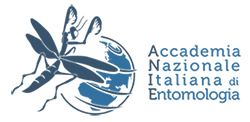
Francesca Dani
francescaromana.dani@unifi.it
BIOGRAFIA
Mi sono laureata in Scienze Naturali all’Università di Firenze nel 1990. Successivamente ho svolto il Dottorato di Ricerca in Biologia Animale studiando la comunicazione chimica delle vespe sociali, sotto la supervisione del Prof. Stefano Turillazzi. Da allora la mia ricerca ha riguardato principalmente la comunicazione chimica negli insetti, prevalentemente sociali, intesa sia come produzione e rilascio di feromoni che la loro percezione e gli effetti sul comportamento. Dal 1996 al 1998 ho lavorato grazie ad una borsa di mobilità del CNR e successivamente un grant individuale Marie Skłodowska-Curie presso il laboratorio di Chemical Ecologie del Prof. E.D. Morgan presso l’Università di Keele (U.K). Ho poi svolto attività di ricerca come post-doc e ricercatrice a contratto presso il Centro di Spettrometria di Massa e il Dipartimento di Biologia dell’Università di Firenze, applicando la spettrometria di massa all’analisi dei feromoni ed allo studio della proteomica degli organi olfattivi di insetti e di altri artropodi. Da alcuni anni mi occupo anche di Biologia di apoidei selvatici. Attualmente sono professore associato di Zoologia presso lo stesso Ateneo.
KRÖBER T., Koussis K., Bourquin M., Tsitoura P., Konstantopoulou M., Awolola T.S., Dani F.R., Qiao H., Pelosi P., Iatrou K., Guerin P.M. 2018. Odorant-binding protein-based identification of natural spatial repellents for the African malaria mosquito Anopheles gambiae. Insect. Biochem. Mol. Biol. 96:36-50. doi: 10.1016/j.ibmb.2018.03.008.
IOVINELLA I., McAFEE A., MASTROBUONI G., KEMPA S., FOSTER L.J., PELOSI P., DANI F.R. 2018. Proteomic analysis of chemosensory organs in the honey bee parasite Varroa destructor: A comprehensive examination of the potential carriers for semiochemicals. J. Proteomics. 181:131-141. doi: 10.1016/j.jprot.2018.04.009.
PELOSI P., IOVINELLA I., ZHU J, WANG G, DANI, F.R. 2017. Beyond chemoreception: diverse tasks of soluble olfactory proteins in insects. Biol. Rev. 93: 184-200. doi: 10.1111/brv.12339.
Pradella D., Martin S.J., Dani F.R. 2015. Using Errors by Guard Honeybees (Apis mellifera) to Gain New Insights into Nestmate Recognition Signals. Chem. Senses. 40:649-53. doi: 10.1093/chemse/bjv053.
DANI F.R., JONES G.R. CORSI S., BEARD R., PRADELLA D., TURILLAZZI S. 2005. Nestmate recognition cues in the honey bee: differential importance of cuticular alkanes and alkenes. Chem. Senses. 30: 1–13. https://doi.org/10.1093/chemse/bji040.
I graduated in Natural Sciences at the University of Florence in 1990. Subsequently, I carried out a PhD in Animal Biology studying the chemical communication of social wasps, under the supervision of Prof. Stefano Turillazzi. Since then my research has mainly concerned chemical communication, considering the production and the release of pheromones, their perception and their effects on behaviour, especially in social insects. From 1996 to 1998 I worked thanks to a mobility grant by the CNR and an individual Marie Skłodowska-Curie grant at the Chemical Ecology laboratory of Prof. E.D. Morgan at the University of Keele (UK). I then carried out research activities as a post-doc and contract researcher at the Mass Spectrometry Center and the Biology Department of the University of Florence, applying mass spectrometry to the analysis of pheromones and the study of proteomics of the olfactory organs of insects and other arthropods. I am currently an associate professor of Zoology at the same University.
KRÖBER T., Koussis K., Bourquin M., Tsitoura P., Konstantopoulou M., Awolola T.S., Dani F.R., Qiao H., Pelosi P., Iatrou K., Guerin P.M. 2018. Odorant-binding protein-based identification of natural spatial repellents for the African malaria mosquito Anopheles gambiae. Insect. Biochem. Mol. Biol. 96:36-50. doi: 10.1016/j.ibmb.2018.03.008.
IOVINELLA I., McAFEE A., MASTROBUONI G., KEMPA S., FOSTER L.J., PELOSI P., DANI F.R. 2018. Proteomic analysis of chemosensory organs in the honey bee parasite Varroa destructor: A comprehensive examination of the potential carriers for semiochemicals. J. Proteomics. 181:131-141. doi: 10.1016/j.jprot.2018.04.009.
PELOSI P., IOVINELLA I., ZHU J, WANG G, DANI, F.R. 2017. Beyond chemoreception: diverse tasks of soluble olfactory proteins in insects. Biol. Rev. 93: 184-200. doi: 10.1111/brv.12339.
Pradella D., Martin S.J., Dani F.R. 2015. Using Errors by Guard Honeybees (Apis mellifera) to Gain New Insights into Nestmate Recognition Signals. Chem. Senses. 40:649-53. doi: 10.1093/chemse/bjv053.
DANI F.R., JONES G.R. CORSI S., BEARD R., PRADELLA D., TURILLAZZI S. 2005. Nestmate recognition cues in the honey bee: differential importance of cuticular alkanes and alkenes. Chem. Senses. 30: 1–13. https://doi.org/10.1093/chemse/bji040.
